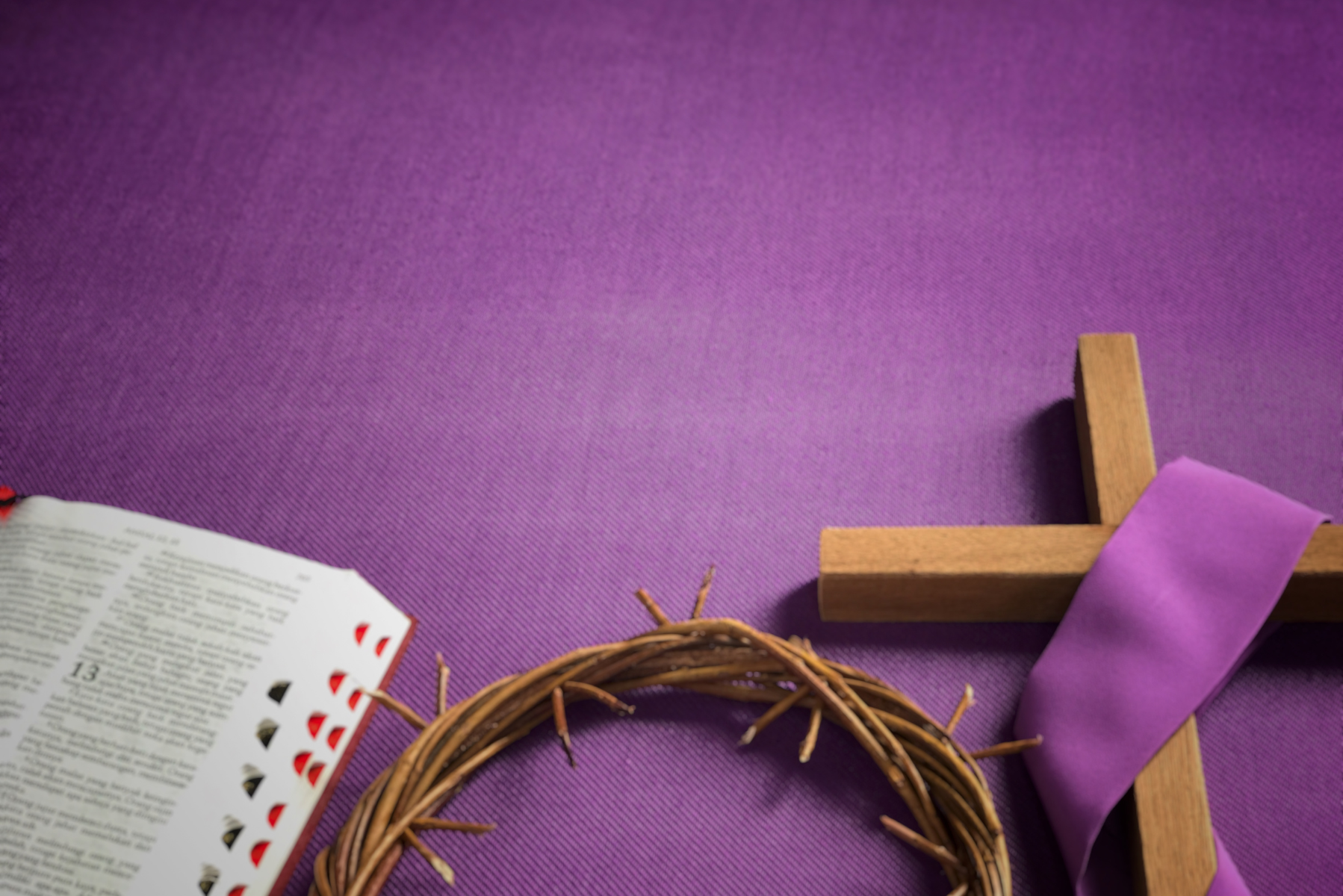News
Demystifying Lent, Part Four: Lent and Easter
March 27, 2023

As Christians now turn toward Holy Week, the drama and purpose of the whole season of
Lent – even the entirety of the liturgical year – comes into greater focus. We began this series
with the observation that a virtue of the liturgical calendar (and so also the lectionary) is to center
our daily lives around the life and ministry of Jesus. Lent is a time of preparation for Easter. As
part of that preparation, we engage in acts of humility and repentance. We are perhaps more
intentional than we might be otherwise to listen to the admonishment of Jesus to take up the
cross and be a servant to all. The discipline of Lent gets us back to the basics of discipleship, so
that we may stand before the empty tomb and receive the Gospel for what it is: a gift given not a
reward earned. As we pray and proclaim in the Eucharistic preface for Lent, “you call your
people to cleanse their hearts and prepare with joy for the Paschal feast, that renewed in the gift
of baptism, we may come to the fullness of your grace.”
The recovery of Holy Week (Palm Sunday and the Triduum of Maundy Thursday, Good
Friday, and Holy Saturday) in the last hundred years has been a relatively “new awakening” for
both Roman Catholics and Protestants. For Protestants in particular, this renewal has ushered in
the greatest change. Before this liturgical revival, most Protestants went from the joyful entry of
Jesus into Jerusalem on one Sunday to the joyous proclamation of Easter the next. Fleming
Rutledge, in her substantial and engaging work, The Crucifixion, writes convincingly of how this
habit has hollowed out the evangelical and Pauline message of the cross as the way to Easter. An
Easter Sunday that has not confronted the horror of the cross dares a willful ignorance of both
the reality and the cost of sin. For both Roman Catholics and Protestants, this ecumenical
renewal of Holy Week emerged from embracing the tradition we share in common: how
Christians in the first several centuries practiced their faith. As Lutheran liturgical scholar Frank
C. Senn describes in his book Christian Liturgy: Catholic and Evangelical, many of the
commemorations of Holy Week began in the fourth-century congregations of Jerusalem and
quickly spread throughout the churches of Europe and Africa.
For many Lutherans, this liturgical renewal, especially around Holy Week, has meant the
reintroduction of practices that were lost not in the Reformation of the sixteenth century but in
the reforms and adaptations of the nineteenth century (for reasons that are too complex to
describe here). Again, Frank Senn describes how the Lutheran churches of Germany and
Scandinavia retained the traditional elements of Holy Week received from the prior tradition:
altar paraments were violet or black, the omission of the Gloria and Alleluia, and even organs
were silenced! Passion narratives were read on Palm Sunday, at each Matin and Vesper service
Monday through Wednesday, and again on Good Friday. Maundy Thursday commemorated the
institution of the Lord’s Supper. As in the medieval church (and Roman Catholic church at the
time), there was no Easter Vigil, only the Holy Saturday Vespers.
It is the recovery of the Easter Vigil, as witnessed in the early church, that helps to bridge
the somberness of Lent to the attentive expectations of the dawning Easter morning. Christians
gathered in the cold night around a roaring fire, a new paschal candle was lit, the congregation
processed into the dark church to hear the story of creation and redemption, catechumens were
baptized, and the first Eucharist of Easter was celebrated as a new day – the day of redemption –
dawned. Through the prayerful dramatization, the church makes vividly real the joyful
expectation of the season.
Perhaps your congregation has embraced this renewal of our older Lutheran and
ecumenical traditions. Perhaps the history recorded here is new to you. Whatever our traditions,
may this Holy Week find us united in the common anticipation of the resurrection of Our Lord
Jesus Christ.
Let us conclude with the beautiful invitation to the altar of the Lord from the
Liturgy of St. John Chrysostom:
Come, rich and poor together; let us celebrate this high festival.
Come, diligent and heedless; honor this feast.
Come, both you who have fasted and you who did not; rejoice together.
Come, the table is full; feast sumptuously.
Come, let no one go away hungry.
Come, enjoy the feast of faith; receive the riches of God’s mercy.